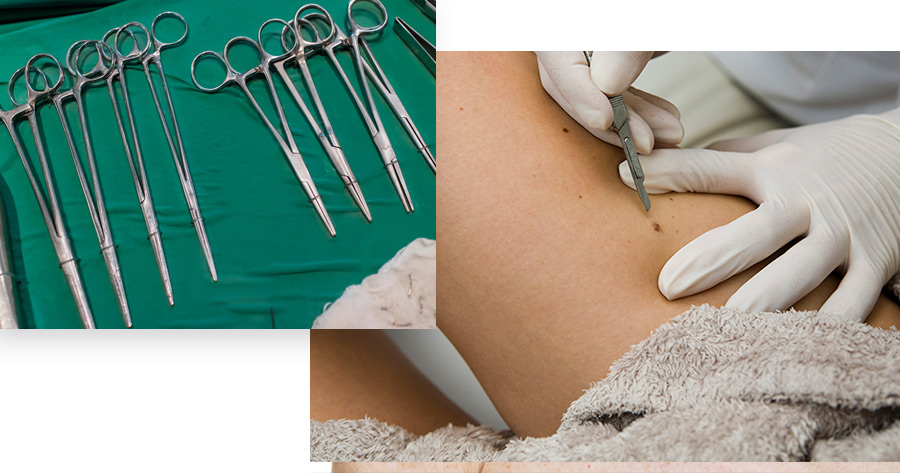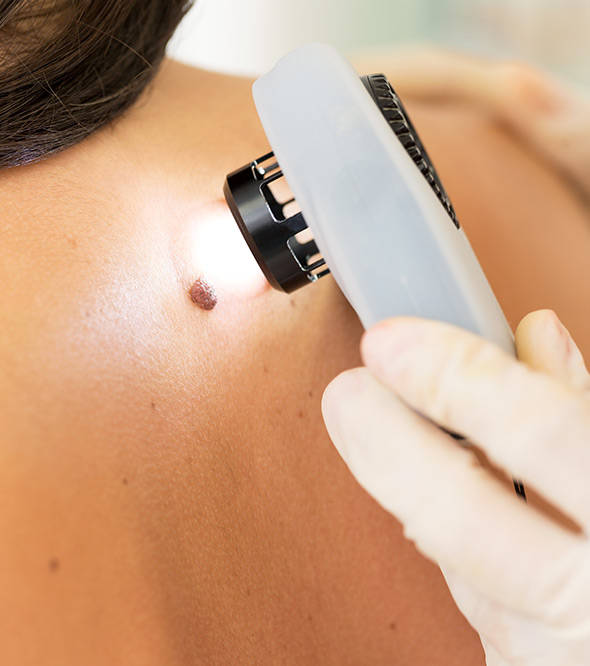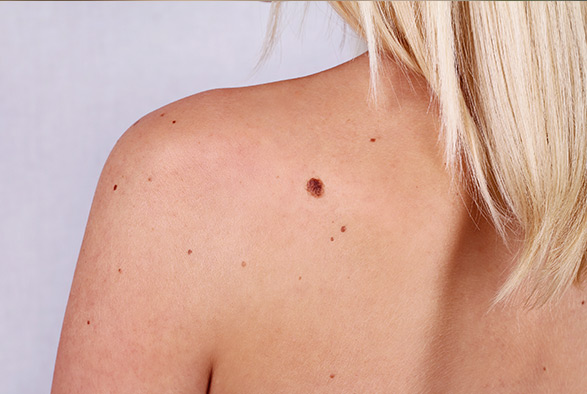Surgical excision is used to treat all types of skin cancer. The experienced surgeons at Advanced Dermatology and the Center for Laser & Cosmetic Surgery offer results that are both medically and cosmetically excellent.

Your physician begins by outlining the tumor with a marking pen. A “safety margin” of healthy-looking tissue will be included, because it is not possible to determine with the naked eye how far microscopic strands of tumor may have extended. The extended line of excision is drawn, so the skin may be sewn back together.
Your physician will administer a local anesthetic, and then cut along the lines that were drawn. The entire procedure takes about thirty minutes for smaller lesions.
Wounds heal rapidly, usually in a week or two. Scarring depends on many factors, including the placement of the tumor and the patient’s care of the wound after the procedure.
The tissue sample will be sent to a lab to see if any of the “safety margin” has been invaded by skin cancer. If this is the case, it is assumed that the cancer is still present, and re-excision is required. Usually, this is when Mohs micrographic surgery is used.

Cure rate is high, and in some cases, the scar is hardly noticeable. The surgical procedure and lab testing provides an opportunity to examine the surrounding tissue to see if the entire tumor has been removed, which is a good safety precaution. Also, the entire procedure is done in one session, unlike chemotherapy and radiation.
The procedure does require the removal of healthy skin, which results in a larger wound. In certain places on the body, like the head and scalp, it can be difficult to put the wound edges back together. This treatment is best suited to tumors in locations where the wound can be easily stitched and closed. In some cases, the size of the tumor will necessitate skin grafts to close the wound.

Cells that have abnormal growth can produce superficial lesions that need to be removed through a process called excision. In some cases, your skincare expert can excise the lesion at his or her office. However, in some cases the lesion has to be removed in a surgical facility in order to improve the chances of success.
All patients are different, so your recovery period will be specific to your case. On average, it takes 1 to 3 weeks for an excision wound to heal. That being said, the best way to get an accurate estimate of the recovery period is to consult with a board-certified dermatologist in your area.
Superficial lesions occur in the subcutaneous fat layer or in the hypodermal part of your skin. These usually appear on the breasts. It is important to make an appointment to see a skincare specialist to be sure they are not a sign of a bigger problem.
Lesions can be categorized as cancerous and non-cancerous. This helps determine whether they pose a risk of developing into a more serious condition. With this in mind, you should consult with a skincare specialist as soon as you see any potential signs of lesions to ensure they are not dangerous.
The most common cause of a lesion is an infection in one of the dermal layers. Lesions can also be caused by cold sores, actinic keratosis, and herpes, just to name a few. In order to locate the source and find the best treatment, it is recommended to make an appointment with an experienced, board-certified dermatologist.
Receive skincare tips, news and special offers!